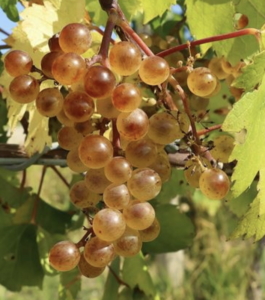Learning about wine
Picolit Wine: History and Art of a Friulian Wine
Origins and History
Picolit wine is an indigenous grape from Friuli Venezia Giulia with deep historical roots. The first documented evidence of this wine dates back to 1682 when a testament mentioned a barrel of sweet Picolit wine; its tradition is even older and linked to Roman times. The international success of Picolit is attributed to Count Fabio Asquini from Fagagna (1726-1818), an agronomist and entrepreneur who, starting in 1762, exported over 100,000 bottles throughout Europe from the Court of Vienna to the papal court.
After a period of decline in the 19th century, the Perusini family contributed to its resurgence in the early 20th century by developing more resilient clones and improving cultivation techniques; today, Picolit is protected by the DOCG Colli Orientali del Friuli Picolit, recognized in 2006.
The term Picolit derives from the small size of the grapes or the Friulian term pecol which refers to the tops of the hills.

Characteristics of the Grape Variety
Picolit is distinguished by two fundamental characteristics:
- Flower Abortion: During flowering, the plant loses a significant number of flowers, leaving only a few grapes that concentrate sugars and aromas.
- Low Productivity: Yields are limited, about 40 quintals per hectare, with sparse clusters and small berries.
These characteristics make it particularly suitable for producing passito or late-harvest wines with peach, apricot, and flower aromas.
Production and Winemaking
Harvesting occurs manually at the end of October, often with over-ripening on the vine to increase sugar concentration. The grapes dry on racks, crates, or controlled environments, following traditional methods or modern technologies.
The winemaking process involves natural fermentation without using selected yeasts to preserve the aromas and ageing in wood, both in barriques and large barrels, followed by further bottle refinement to develop complexity.
DOCG Regulations
To be classified as Picolit DOCG, the wine must contain at least 85% Picolit grapes, with the remaining 15% local white grape varieties (excluding Traminer Aromatico). In the Cialla subzone, it has to be 100% Picolit.
Style and Pairings
Picolit wine is a meditation or dessert wine characterized by floral notes (jasmine, acacia), tropical fruit, and hints of honey, with a smooth structure, balanced acidity, and a savoury finish.
Ideal pairings include aged cheeses like Montasio, chocolate desserts, or dried fruit.
Picolit embodies the essence of Friuli: a rare and precious wine with a rich history and extraordinary resilience. From its revival in the 20th century to its DOCG achievement, Picolit remains a symbol of oenological excellence, merging tradition and innovation in a golden glass. Discovering Picolit means immersing oneself in a sensory journey that celebrates the beauty and complexity of our wine heritage.





